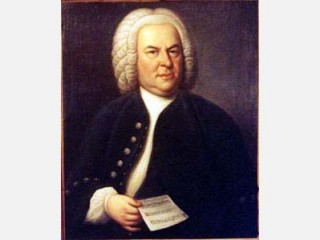
Carl Philipp Emanuel Bach biography
Date of birth : 1714-03-08
Date of death : 1788-12-14
Birthplace : Leipzig, Germany
Nationality : German
Category : Famous Figures
Last modified : 2011-01-26
Credited as : Composer, son of Sebastian Bach,
Carl Philipp Emanuel Bach, a German composer, keyboard performer, and theorist, was a prolific composer of vocal and instrumental music, especially for keyboard instruments. He contributed to the formation of the so-called Viennese classical style.
The second surviving son of Johann Sebastian Bach, Carl Philipp Emanuel Bach studied with his father and musically was the most important and influential of the sons. His career as a whole has been said, by E.F. Schmid, to mark a development "halfway between the world of his father and that of the Viennese classics." After schooling at Leipzig, he took a law degree at Frankfurt an der Oder in 1735. He moved to Berlin in 1738 and became keyboard player for the young crown prince, Frederick of Prussia, who in 1740 became King Frederick II. Bach remained in Frederick's service until 1767 as keyboard performer, composer, and accompanist to other members of the royal musical entourage, which included Frederick himself as flutist and a very distinguished circle of musicians.
Two early sets of keyboard sonatas, the "Prussian" Sonatas (1740) and the "Wurttemberg" Sonatas (1743), show that by the age of 30 Bach had achieved a fully mature style of composition, less rigorous in its contrapuntal organization than that of his father but with considerable power of invention and formal design and with evident stress on bringing to keyboard composition some of the intense expressivity associated mainly with vocal music; for example, the first of the 1740 Sonatas has an instrumental "recitative" as the slow movement.
The publication of his Essay on the True Art of Playing Keyboard Instruments (1753) made Bach the most renowned authority of the 18th century on keyboard pedagogy and composition; along with the treatises by Johann Joachim Quantz on the flute and by Leopold Mozart on the violin, it remains one of the principal monuments of 18th-century musical thought and practice. The essay also reflects Bach's preeminence as a keyboard performer, for which he was acclaimed throughout his life. When Charles Burney visited him in Hamburg in 1773, he wrote vividly of Bach's performance on his "Silbermann clavichord, his favorite instrument, upon which he played three or four of his choicest and most difficult compositions, with the delicacy, precision, and spirit for which he is so justly celebrated. … "
In 1767 Bach moved from the court of Berlin to a position in Hamburg as director of music at the major churches of the city, and he remained in Hamburg until his death in 1788. His duties called for extensive composition of sacred music, and his Hamburg works include two oratorios and a number of motets and cantatas. He also wrote more than 250 religious and secular songs. But by his own admission he attached the greatest importance to his instrumental music, and he continued in later years to set himself new problems in keyboard composition. The principal later works in this field are his Sonatas, Fantasias, and Rondos for Connoisseurs and Amateurs, published between 1779 and 1787.
A measure of Bach's importance to the inner development of 18th-century style may be seen in the unequivocal claim by Franz Joseph Haydn that he owed a great debt, which dated from his earliest apprentice years, to the music of C. P. E. Bach; and in Beethoven's remark in a letter of 1809 that works by C. P. E. Bach "should certainly be in the possession of every true artist, not only for the sake of real enjoyment but also for the purpose of study."
The best approach to the music and thought of C. P. E. Bach is through his own Essay on the True Art of Playing Keyboard Instruments (1753; trans. 1949). Other important early writings are his Autobiography (1773; trans. 1967) and Charles Burney's account of his visit with Bach in The Present State of Music in Germany, the Netherlands, and United Provinces (1773; 2d ed. 1775). A valuable recent study is Philip Barford, The Keyboard Music of C. P. E. Bach Considered in Relation to His Musical Aesthetic and the Rise of the Sonata Principle (1965).
Ottenberg, Hans-G'nter, C.P.E. Bach, Oxford; New York: Oxford University Press, 1987.
















